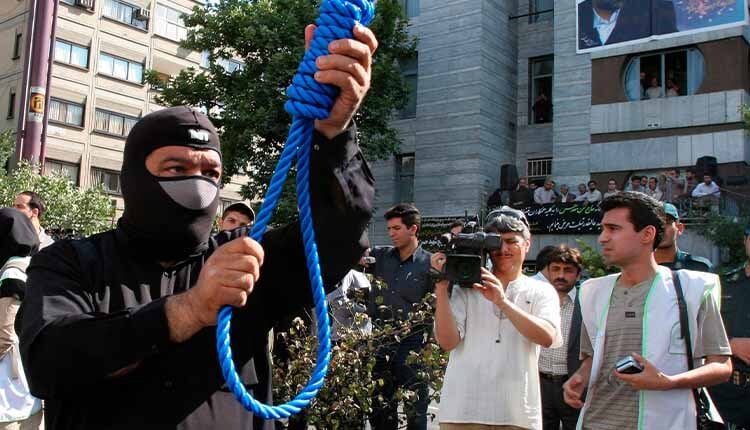
October 10 marked the World Day Against the Death Penalty while the world’s top executioner per capita, Iran, witnessed anti-regime protests for the fourth consecutive week.
Since taking power in 1979, Iran’s ruling theocracy has been using executions to intimidate the vibrant and progressive society that has rejected mullahs’ backward thinking from day one. The regime’s incessant use of capital punishment has earned it the first rank of executioner per capita. Hundreds of Iranians are sent to the gallows every year under different pretexts, mainly political dissidence.
The clerical regime never stopped executions during Hassan Rouhani’s presidency, who presented himself as a “moderate,” roughly 5,000 Iranians, including over 130 women, were hanged.
Since Ebrahim Raisi took over for Rouhani in 2021, there have been nearly 800 executions. The number should be more, given the regime’s secrecy in announcing executions. In other words, executions have seen a dramatic since Raisi became president.
This was no surprise to human rights defenders and the Iranian people, as Raisi’s dark record of human rights violations was common knowledge. In fact, the regime Supreme Leader Ali Khamenei pulled him out of the ballot box in a bid to use him as the bogeyman to terrorize Iran’s restive society.
Raisi played a key role during the mass political executions in the 1980s. During the 1988 massacre of over 30,000 political prisoners across Iran, Raisi sat on Tehran’s so-called “Death Commission,” sealing the fate of tens of thousands of prisoners. Based on a fatwa by the regime’s then-supreme leader Ruhollah Khomeini, those commissions were tasked to identify and purge political dissidents, mainly supporters and members of Iran’s leading opposition group, the People’s Mojahedin Organization of Iran (PMOI/MEK).
The 1988 massacre remained uninvestigated and unpunished, perpetuating what many observers believe is the “culture of impunity.” When Raisi became the regime’s president in 2021, Amnesty International’s Secretary General Agnès Callamard referred to this development as a “grim reminder that impunity reigns supreme in Iran.”
On the World Day Against the Death Penalty- Criminal executions are a sign of the mullahs’ desperation in the face of an explosive society; but they will not escape inevitable overthrow.#StopExecutionsInIranhttps://t.co/Kig1vW8r6y pic.twitter.com/WA3T34HJZA
— Maryam Rajavi (@Maryam_Rajavi) October 10, 2022
This impunity once again showed its evil face during the regime’s heavy crackdown on protesters throughout the last four weeks. The regime’s security forces are opening fire on protesters, and according to the reports tallied by the MEK, over 400 people have been murdered in cold blood during the recent onslaughts.
Besides, roughly 20,000 protesters have been detained, many facing the risk of being executed. Mostafa Salehi and the wrestling champion Navid Afkari were detained during the 2018 major protests and were hanged, despite an international outcry to save their lives.
It is crystal clear that Iran’s ruling theocracy, like any other dictatorship founded on human rights abuses, will never end its violence. These regimes know that without full-fledged oppression, including executions, they wouldn’t last a day.
Therefore, it would be a mirage to believe in an end to the violence employed by Iran’s clerical. The world community should end the naive thinking that dialogue would impact the regime’s cycle of violence. The only way to break this cycle is to recognize the right of all Iranians to self-defense against this brutal regime. The time has come for the international community to go beyond condemnations and take concrete actions to end the crisis of impunity in Iran.